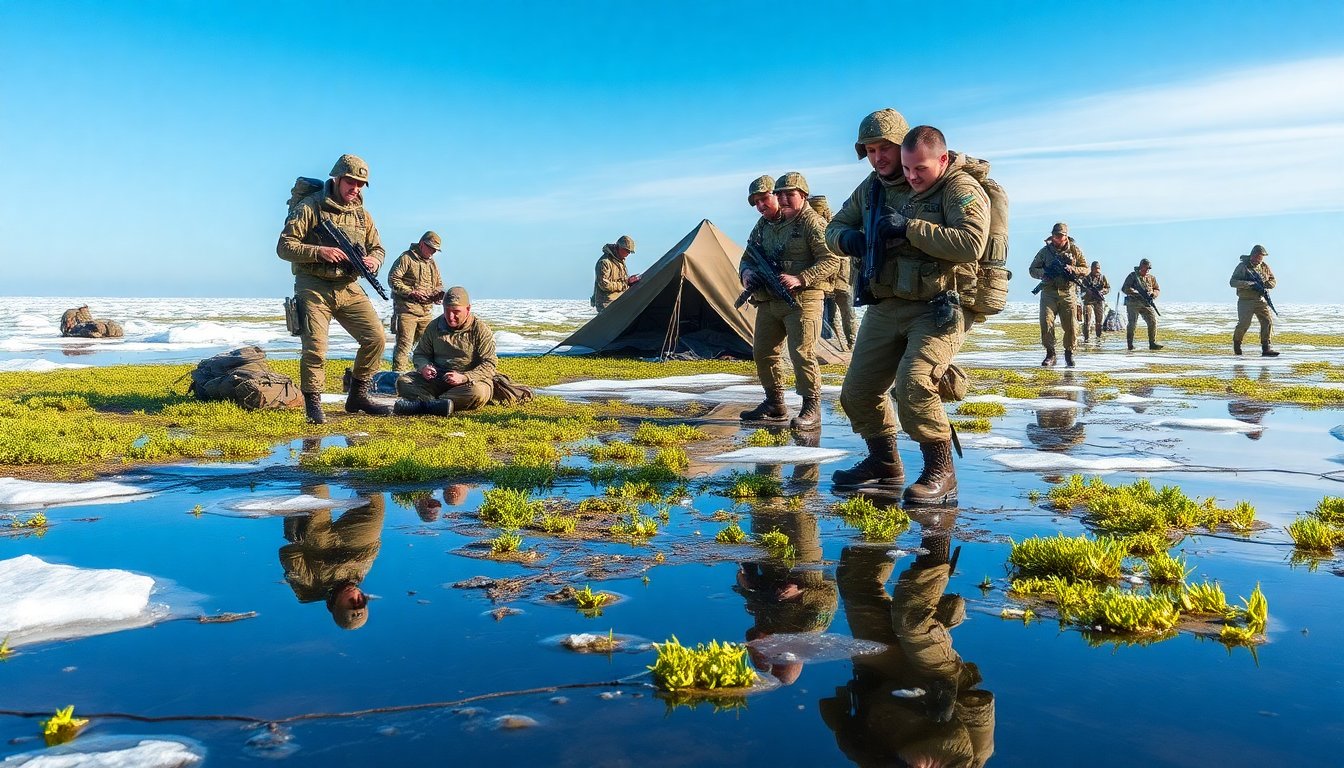Table of Contents
When considering the Arctic, visions of frigid temperatures and relentless snowstorms often dominate. However, for soldiers stationed in this remote region, summer introduces a set of challenges that can be equally daunting. The intense warmth of the summer months poses a unique threat, often overshadowed by the notorious winters.
As winter’s icy grip loosens, the landscape changes dramatically. Flooded marshes appear, transforming the once serene Arctic environment into a breeding ground for numerous insects. For soldiers in this unforgiving region, these insects are not merely a nuisance; they present a significant hurdle, complicating their demanding training routines.
The facts
With rising temperatures, Arctic soldiers must adapt their training strategies to accommodate the new conditions. While conditioned for extreme cold, the transition to warmer weather introduces unforeseen challenges. This requires a comprehensive understanding of how heat impacts physical and mental performance.
Training adjustments for summer conditions
To tackle the discomfort of summer, soldiers engage in rigorous training that emphasizes resilience. This includes acclimatization exercises to help them gradually adapt to increasing temperatures. Hydration is crucial, as soldiers must ensure they remain hydrated to prevent heat-related illnesses. Regular breaks, shaded areas, and appropriate clothing are part of the strategies employed to combat summer challenges.
Additionally, soldiers are trained to recognize the signs of heat exhaustion and heat stroke. Understanding these symptoms is vital for maintaining operational readiness. This training combines physical drills and educational sessions, enabling soldiers to monitor themselves and their peers.
The invasion of insects
Along with warmer temperatures, summer in the Arctic brings an influx of insects that can hinder training. Mosquitoes and other biting insects thrive in the humid conditions created by melting snow and flooded marshes. These pests can disrupt concentration, morale, and the effectiveness of training exercises.
Strategies to manage insect infestations
In response to this challenge, soldiers utilize various tools and techniques to mitigate the impact of insects. The use of insect repellent, protective clothing, and netting in training areas are common practices. These strategies not only alleviate discomfort but also allow soldiers to maintain focus on their training objectives.
Moreover, soldiers are encouraged to adopt a mindset that embraces these conditions as part of their training experience. Instead of viewing insects as a hindrance, they learn to see them as opportunities to enhance their adaptability and resilience. This perspective fosters camaraderie as soldiers collaborate to overcome these obstacles.
The psychological aspect of warm weather training
Beyond physical challenges, the psychological impact of transitioning from cold to warm weather is significant. Soldiers must develop strong mental fortitude to navigate the discomfort accompanying summer training. This mental preparation is as critical as the physical training they undertake.
Building a robust mental framework involves fostering a positive attitude and developing coping strategies. Soldiers learn to set realistic goals and practice mindfulness techniques to maintain focus despite distractions from heat and insects. By employing these strategies, they enhance their performance and overall resilience.
As winter’s icy grip loosens, the landscape changes dramatically. Flooded marshes appear, transforming the once serene Arctic environment into a breeding ground for numerous insects. For soldiers in this unforgiving region, these insects are not merely a nuisance; they present a significant hurdle, complicating their demanding training routines.
0


